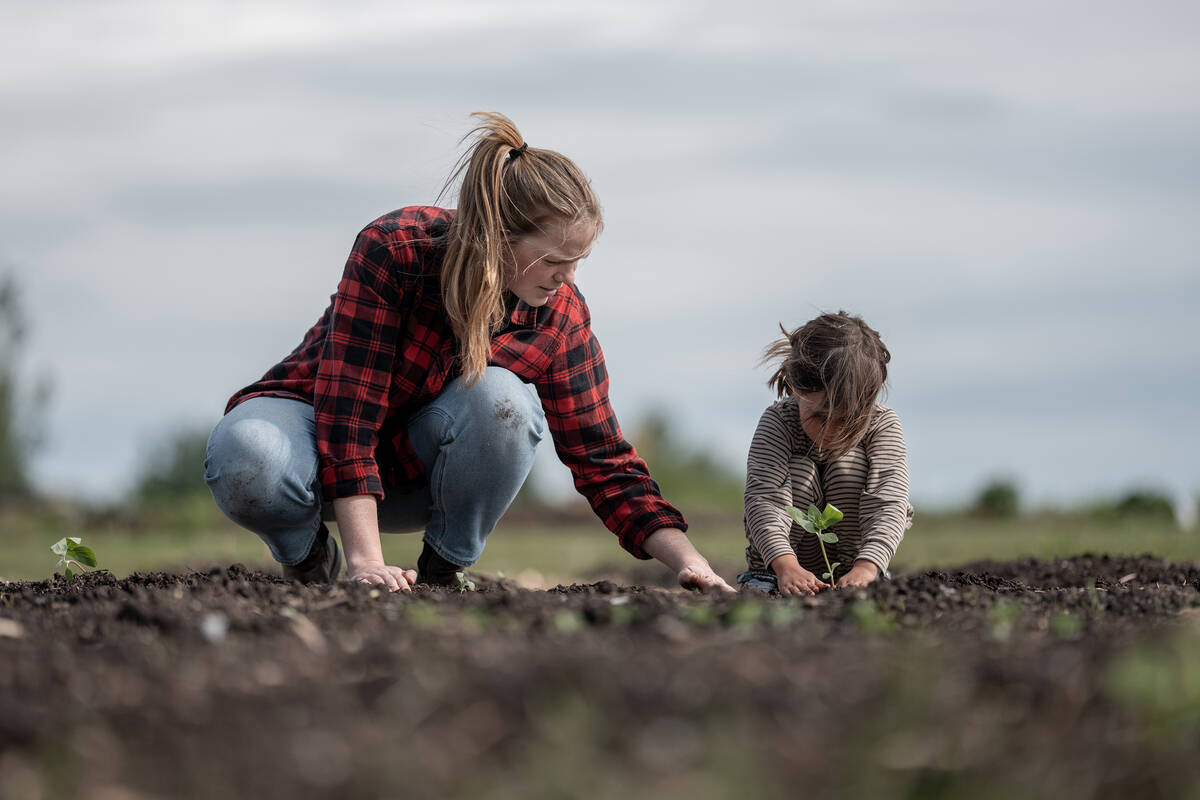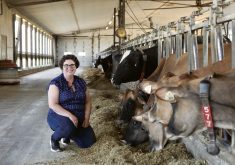Farmers are expert at producing food. No one doubts that. Increasingly, farmers are also expert at finances and myriad other sorts of business management. Again, that’s beyond debate.
But are you expert at launching startups too?
It’s one of the big questions of 2020, when so many of the ideas that are bubbling up across farm country call for connecting with the market in ways that farmers haven’t really done in past.
Even before COVID-19, Braden Douglas, founder of CREW Marketing Partners, was getting contacted by a growing number of farmers.

“There’s an appetite for farms to get more entrepreneurial and engaged,” says Douglas.
A big reason is that more farmers like Rob and Charlotte Lepp are looking to diversify to make their farms more viable.
“They want that control,” says Douglas, who founded CREW in 2007 after a career in consumer goods marketing with companies like Frito-Lay and Proctor & Gamble. “And when they have their own products and set their own pricing, doing their own thing, it allows them to diversify some of the revenue, and also to diversify their total portfolio.”
CREW has offices in Vancouver, Kelowna and Toronto, employing over 50 people providing marketing advice and services to all points in the food value chain, from implement manufacturers and dealerships to commodity organizations, co-operatives, wineries, food processors and individual farm businesses.
Read Also

Farm succession: Where to begin?
Recognizing that the process of farm succession is lengthy, involved and requires a solid end goal can help farmers determine where to start.
There are multiple factors driving the farm trend, Douglas says. Some start in the marketplace; some on the farm.
New opportunities that come with the changing consumer are high on the list. In fact, they were there even before COVID-19 intensified the trend. “Consumers want greater transparency,” Douglas says. “They love the romance of farm-to-fork, they want to see where their food is made and they have questions, so when they can have a direct relationship with a farmer, it’s a better experience for the consumer, it’s usually a better product, and it’s a good win/win.”
There’s also the growth of social media, which opens a world of new business opportunities by giving farmers efficient tools for identifying and contacting potential customers.
And there’s a demographic change in the farmers too.
“For the farms we’re working with to launch products and build their own brands, it has often been a way for the parents to engage the next generation,” says Douglas.
“It’s usually the younger generation, the children in their 20s, 30s or younger, that are excited about it, and they’re engaged because they can sell it, and use social media or some other platforms to get the word out. We’re seeing a lot of farms, for succession reasons, are getting the next generation involved in marketing, and they’re loving it.”
Oh, and there’s one more reason.
It’s that more farmers are buying into the key message. It isn’t just words anymore. “When you have your own products and brand, it’s like real estate,” Douglas says. “You are building equity or value that can be quite profitable one day.”
Taking the plunge
But how do farmers make that decision to try direct-marketing, or launch their own value-added products? How do they assess if they have the time, money and skills needed to see the process through, and if it’s likely to be successful? When do they know they need help and turn to a marketing company like CREW? And if they do that, how do they know they are getting the right advice and the help they need?
Douglas and his team have developed an eight-stage process (see sidebar) that’s designed to help their clients know what they are getting into and determine if the fit is right for them.
Hurdles do have to be addressed. Consider the farmer’s personality, for example. The traits that make you a great food producer aren’t necessarily the ones you’ll need for putting yourself out there and creating buzz around a new product.
There’s also the cost to bring a product to market, and the complexity of things like packaging, food safety, co-manufacturing and distribution.
“I always want to make sure that they have their eyes wide open when they get into (a new venture) because I want them to be successful, so they need to know what it’s going to take and be sure it’s what they want,” says Douglas.
Marketing can get expensive, but a good marketing company can help stretch advertising dollars and figure out the most effective ways to reach the audience you want to reach, while not breaking the budget.
“In my experience, if you’re going to launch something from scratch and you want professional help to create the branding, packaging, get a website launched, and everything else, you’re usually looking at a minimum of $50,000 to do it well,” says Douglas. “If you want to do it on a smaller scale, it could be much less. For $10,000 you could probably have a pretty good website, and get some presence, some photography done and test it out to see what happens.”
Even the things that seem simple will take more time and effort than you might think. “With social media, it doesn’t cost a lot in terms of the amount to communicate, but it takes a lot of time and that’s an investment and a skillset.
“I always say, if you’re going to do it, make sure you do it right. Do it well, do it smaller, get the model right and then really grow it if it starts to gain traction behind it.”

The good news is that there are a number of government programs available for farmers to help them become better at processing and create value-added products.
In today’s world, marketing means going beyond just telling the farm story.
“Just selling where (the product) comes from isn’t enough anymore, unless it’s a really local market, but on a larger scale, there are a lot of people doing that right now,” says Douglas.
“We’re fortunate in Canada to have an ample supply of great food, so you have to create a niche and a unique point of difference that is worth people wanting to pay more for your product, or else you’ll end up competing against the Walmart, Loblaws and Sobeys of the world, and you’re not going to win.”
When to bring in help
The decision to bring in a professional marketing company like CREW is a big step, and often it’s tied to the level of risk involved.
“If it’s going to be low-risk, you can probably figure out a lot of things on your own, but if you are going to take some higher risk, and maybe have to buy equipment (or make larger investments to make the product), I would say it’s much better to bring in professional help,” Douglas says.
It has to be the right help, which means doing some research and making sure the marketing company has expertise in the food industry.
“There are a lot of people that know marketing and branding and social media and all this, but to market food and to be successful at it, it’s really hard,” says Douglas. “They need to know all that’s involved, the regulations and all the things that come with selling food.”
They also have to be a fit as far as working with you, because a lot of marketers are used to working with very large companies and may not understand the needs of a smaller operation.
“A smaller business, like a farm, will need a little bit more help and education; they need a little bit more nuts and bolts on what to do,” says Douglas.
Do your research
“I’ve seen it over again in market research where people will tell you, ‘I love this, I would totally buy it,’ and when they go to the grocery store, they don’t buy it,” says Douglas. “They either buy what they’re already used to buying or they buy what’s on special because price typically overrides purchase decisions. So, you have to do your due diligence because once you’re in, you’re committed.”
It is true, though, that Canada is producing some great opportunities to diversify the farm and bring in additional revenue.
Consumers continue to love the farm-to-fork concept, says Douglas, and want to not only know where their food is grown, but also connect with the people who grow it. It’s a trend that has probably grown even stronger because of the COVID-19 pandemic and also because of food scares with imported food products.
That isn’t the only trend, though. There’s also huge growth in pre-packaged meals that consumers can just pop in the oven, and for health and wellness foods.
Purchasing food online is here to stay too. “We are seeing a lot more people becoming comfortable with e-commerce now, so farmers can have that direct connection with people who want to order their products,” says Douglas.
But that doesn’t mean you can always expect an overnight success. “It takes time for consumers to understand something, to start to cook with it, to get it into their diet, to create habitual behaviour, which then increases demand over time,” says Douglas, who believes the Canadian farm industry is missing opportunities by not promoting itself more aggressively.
He sees opportunities for smart co-ops to ask, for instance, “how are we going to get barley or these different types of grains to be in the diet of Canadians, and get inside of it to get the price up.”
“Canadian grains should be premium in the market. We’re modest at times to our own detriment, and we have to be prouder and say we’ve got great farmers, they care, they have great food safety standards, and we can grow some of the best food in the whole entire world.”
Eight crucial steps to direct marketing
CREW Marketing Partners of Vancouver has helped a lot of clients involved in the food supply chain, including individual farms, diversify into direct marketing by taking them through this eight-step process to help them develop a marketing strategy that will bring them success.
1. Organizational direction: Have a clear idea of why you want to start a new venture and a vision for it.
2. The product: What are you going to sell? What makes your product unique or special?
3. Audience: Who are you going to be selling to? Where are they located? Are there enough people to support it? Are you looking at the organic, high end where consumers are willing to pay extra or will it be low cost?
4. Price point: What is the price point that you’re going to be able to achieve in the market and does it cover costs and make you a profit? How will you price it and position it well?
5. Distribution: Where and how are you going to distribute it? Is it local, is it going to be through markets, grocery stores or online?
6. Brand and promotion: What will you call your product? How will you package it? What is the brand going to say? How are you going to get people excited about your product? What channels will you use — social media, print, newsletters, etc.
7. Budget: How much can you afford to spend on marketing and promotion? What’s the most cost-effective methods to use?
8. Measure results: Did you achieve your sales targets? Are you reaching the right audiences — there are lots of online, low-cost or free analytics tools available to help with this.
















